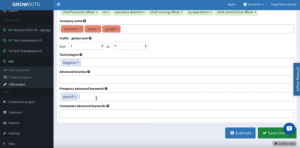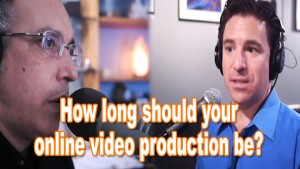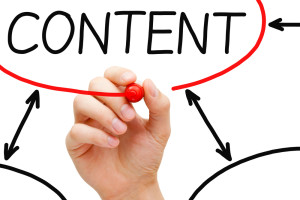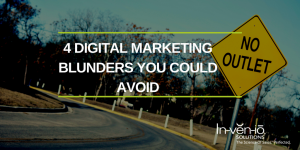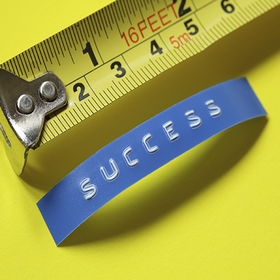— July 18, 2017
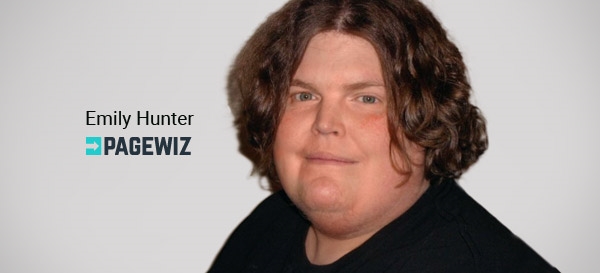
What is the goal of a landing page? To get conversions, right? Well, it’s not quite so simple. Landing pages need two things to work well. They need traffic and they need to convert. Yet these goals can be contradictory.
Unless you’re solely relying on PPC to drive traffic to your landing page, you’ll need to work on its SEO. However, many of the best practices for SEO do not work well for landing page copy. Here are some contradictions:
- SEO pages should be tied to your website’s domain to maximize link juice. Conversion-oriented pages are often on their own domains.
- Search engines like a lot of content. Conversion-oriented pages are to-the-point with minimal fluff.
- A page designed to work to make a fast conversion could create a high bounce rate, another negative SEO factor.
- SEO pages need to stick around for a while to gain age. Conversion-oriented pages are usually temporary.
How is this dilemma between making a landing page that ranks high organically while still delivering a landing page with a high conversion rate solved? Is it good to go for one or the other? That’s what we’re going to explore in this article.
The Difference Between The Two

According to MOZ, here are the differences between the two types of pages.
SEO:
- Ranks for keywords AND tries to convert
- Key metrics: Low bounce rate with high CTR
- Content is targeted toward keywords
- Has enough content and quality to earn editorial links
- Primary goal is traffic and exposure, not conversions
- Doesn’t necessarily have an obvious CTA
- Can be used to drive traffic to a conversion-focused landing page
Conversion:
- Primary focus is conversions, though it may rank on some hyper-targeted keywords
- High bounce rate is okay IF CTR is also high.
- Targeting keywords may be unnecessary
- Focuses on one core audience that, hopefully, is already qualified.
- Doesn’t need editorial links.
- Primary traffic comes from on-site or paid funnels
We can draw a few conclusions from this. No matter what type of landing page you have, conversions are a key thing to have. A page that doesn’t convert is just an information page, not a landing page.
Here’s what I consider the key principle that solves the conundrum. The more you can pre-qualify your visitors before they land, the less SEO you need.
The more you can pre-qualify your visitors before they land, the less SEO you need.
Let’s look at three scenarios where we can see extremes of this principle.
Your Product May Be The Landing Page
For a small e-commerce site with just a few products, your product pages become landing pages all on their own. All those pages you see from Amazon when you search for a product are landing pages because they do have a call to action, the buy button. But beyond making it easy to find, there’s no need to hard sell the visitor to buy a product.
Why? The search that they did to find your product page pre-qualified the lead. Solid SEO tactics like the ones listed above automatically filter searchers to your product. Just the fact that you have a product that matches their search query is enough to push a conversion.
If your SEO can prequalify your leads by choosing appropriate search terms, then that may be all the persuasion you need once they land. Thus, it makes sense for product-heavy websites to lean more toward the SEO side of landing page construction rather than the conversion side. In fact, a hard-sell conversion after they land on your product could drive them away. They don’t want further convincing. They want to buy the product, so make it easy!
Maybe You Want To Hide?

Sometimes a landing page is used as the next part of a funnel from another product. For instance, your visitors could view a webinar that talks about a product at the end and you want to offer the viewers a special discount through a separate landing page. You may not want to get that landing page too high in the rankings, but you do want those who land on it to convert fast.
This is a situation where you can throw all your copywriting and persuasion techniques to get people to buy a product or deliver personal information to you. Your internal product or page does the pre-qualification. Unlike SEO, however, your visiting audience is much more qualified. They’re already on your site and in the funnel unlike someone finding you through a SERP. Instead of keywords being the filter, your site’s content is the filter.
PPC Is Your Thing
If you have a product or service in a highly-competitive market, you may be using PPC to drive searchers to your landing page. In this case, your ad is your filter for qualified leads. A PPC landing page falls in the middle of the two extremes. The ad does more prequalification than an organic search does, but not as much as an internal funnel path.
However, depending on your ad network, you may need to put in some SEO clues to show the ad network that you’re not a spammer or a data harvester. Thus, you can’t be as hard-sell as you might be with an internal funnel page. You should always comply with your ad network’s policies for creating a quality ad before you start thinking about SEO or conversion tactics. Their policies provide the boundaries you can work with.
Judging Success
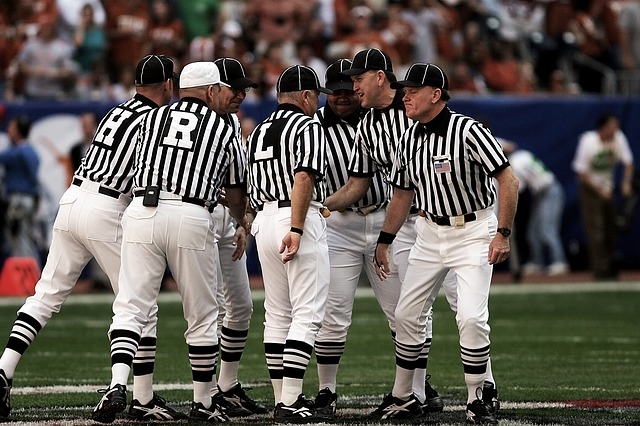
The key metric for any landing page is CTR, period. For those unfamiliar with CTR, it stands for click-through rate. It’s the number of people who do the conversion action divided by the number of visitors. This yields a percentage. A 50% CTR means that out of all of the visitors to your landing page half of them performed the conversion action.
A lot of people look at the bounce rate of a page as a an indicator of success, but this can be misleading. Bounce rate is a measure of how many people leave your website after viewing a single page. It seems logical to look at it because if a viewer hits your landing page and then leaves immediately, this metric tracks that.
However, if you have a landing page that’s using a lot of pre-qualified leads, like a conversion-focused landing page, bounce rate isn’t as much of a factor if the conversion rate is also high. Most conversion-focused landing pages don’t have another page to link to besides the conversion link to eliminate wandering from the CTA. Thus, bounce rate isn’t a useful metric. CTR is the better metric to follow for these kinds of pages.
In contrast, visitors to an SEO-focused landing page might wander through several pages before they’re convinced to buy. They may want to look at similar products, jump to a review page, see shipping policies, or any number of things on site prior to making a purchase. These additional page views persuade the visitor to make the purchase. Thus, you want a low bounce rate for this type of page because it shows that not only did they didn’t convert, they also weren’t interested enough in the rest of your site links to get more information or see other offerings.
Page Age
Ranking in a search engine takes time. It can take up to a year before a landing page starts to get a lot of notice by a search engine. Most links on the first page of Google have been noticed for three years or more.
If your landing page is SEO-oriented, you need to take this factor into account before deciding if a page is a success or a failure. Don’t take down your landing page too early or tweak it too much too soon.
But what if your landing page is for something seasonal like a Christmas sale? It’s actually better to leave the page up. If you take down the page and put it back up, you lose the SEO benefits of age on that page. Here is an excellent example of a Black Friday landing page that stays up all year round. It has a heavy SEO orientation to Black Friday, yet is still human-readable enough to know that this is the place to go to see specials the next time Black Friday rolls around. It’s not a dead promotion page.
Conversion-oriented landing pages don’t have to worry about page age as much due to the pre-qualification by means other than search engine queries. However, they can expect to get a natural boost over time as they age. This is why having one or two hyper-focused keywords in the landing page text will help qualify those who do stumble on your page. Might as well take advantage of free advertising!
Can You Strike A Balance?

It’s possible to create a page that converts well and still has good SEO, but it’s very hard. A much better route is to have your SEO landing pages lead to high-conversion landing pages. Again, it’s all about prequalification. If your SEO landing pages can create a filter as well as a funnel path on your site, then they’ll perform double-duty.
If all you are doing is selling products like Amazon, you may have no need for high-pressure sales pages. But consider for a moment how hard Amazon pushes their Amazon Prime offering. This is an excellent example of how SEO-landing pages (all those products) can lead to landing pages that urge people to convert to Amazon’s yearly subscription model.
It’s possible to create a page that converts well and still has good SEO, but it’s very hard.
What Should Both Types Share?
Regardless of which tactic you lean toward for your landing page, there are some core things that are shared by both types you need to include:
Strong title tag: This is the primary source where search engines will get the first keywords about your site. Your most important keywords need to be in the title. Conversion-oriented pages should put their hyper-focused keyword into here.
Proper headings: Both the human eye and search engines use headings to divide up content. Headings need to communicate what content the reader can expect below. Search engines also use words in the headings to analyze content below the heading to see if there is coherency. Headings should also follow a proper hierarchical format.
Clarity: No one wants to read a cluttered page where it’s hard to find either information or a CTA. Pages with clarity appeal to human eyes.
Strong CTA: Strong is relative depending on how conversion-focused your page is, but all CTAs need to be found easily and clearly communicate what the call is. As soon as the urge to convert hits the viewer, they need to know where to go.
Good copy: Without clear and compelling copy it’s tough to sell something online. Even for a pure SEO-oriented landing page, the copy should be clear enough to entice the reader without violating SEO guidelines. The copy should also answer the initial query that brought the user to the page quickly and thoroughly.
Digital & Social Articles on Business 2 Community
(78)




